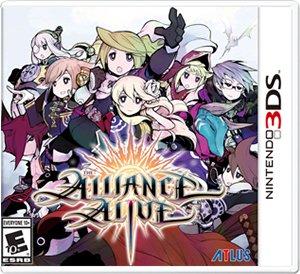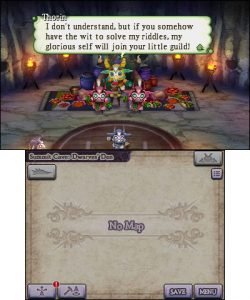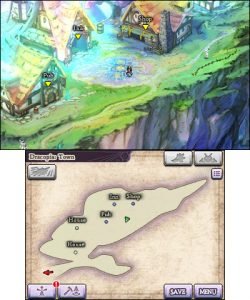Despair-ridden and downtrodden, humanity is a lesser race in the world of The Alliance Alive, crushed beneath the heel of Daemons who rule over them with godlike sovereignty. But when nine would-be heroes from disparate realms are pushed beyond their breaking point, nothing short of a revolution ensues. Their story is at the heart of The Alliance Alive, a spiritual successor to 2015’s The Legend of Legacy featuring unconventional combat mechanics that draw heavily from the SaGa series. Much like the games that inspired it, The Alliance Alive prioritizes player experimentation over explicit guidance, making it an oddity in the era of follow-the-flashing-arrow quest design.
There’s an interesting duality to the flow of The Alliance Alive. While this JRPG follows a linear narrative trajectory from start to finish—albeit one that does not always clearly define the player’s next objective—it gives them immediate freedom to develop their characters however they wish. There are no levels or experience points; instead, each of the playable heroes is a (mostly) blank slate that becomes increasingly proficient with whatever weapons they use in battle, with a few exceptions. The SaGa-esque turn-based combat system features a familiar “Awakening” mechanic, wherein characters can suddenly learn new abilities in the heat of battle. A single resource called “Talent Points” can be invested to raise the likelihood of this happening, but character development in The Alliance Alive is generally random to a potentially frustrating degree. Further strategy exists in the careful utilization of “Final Strikes,” which are powerful attacks that break a character’s weapon until they rest at an inn, and the adjustment of battle formations that confer passive stat bonuses based on each character’s position in the lineup. These complementary mechanics help The Alliance Alive feel less antiquated than similar games in its mould, but it remains something of an acquired taste that is difficult to recommend.
More compelling, as far as I’m concerned, is the game’s deliciously grim atmosphere. From the very get-go, The Alliance Alive makes it clear that humanity has everything to lose should their rebellion against the Daemons fail. Their imposition of a strict, hierarchical society upon the humans is only one facet of their villainy. Early on, whenever the cast tries to stand up to their oppressors, they face dramatic consequences; it is only at the game’s halfway point that they start to make any headway, making The Alliance Alive a surprisingly rousing story of triumph against stacked odds. None of the characters are especially deep, but each plays their role well enough, and their contrasting personalities serve as the premise for some amusing interactions. Because the story’s perspective continues to shift even after the principal cast is united, it feels like there is no one true protagonist; rather, the “protagonist” is humanity itself—plus a few key sympathizers.
The game’s dark, melancholy visual design is another highlight. I am particularly taken with the ethereal, imposing Daemons that serve as The Alliance Alive‘s primary antagonists. They’re quite unlike what one might expect upon hearing the word “Daemon”; luminous and elegant, their graceful demeanour and restrained expressions belie no hint of their fearsome capacity for cruelty. Yet nothing augments The Alliance Alive‘s dreary ambience quite like Masashi Hamauzu’s masterful soundtrack. Plaintive violin and crunchy electronica coalesce in decadent harmony here, creating one of his most superlative efforts to date.
There are elements of The Alliance Alive that I adore and others that make me gnash my teeth in frustration. The randomized nature of character progression meant that I often felt like I had little control over my ability to succeed in the game. My most powerful characters would become impotent at the drop of a hat as enemies rapidly outclassed them, and an extended sequence about 3/5 of the way through the game that splits the cast into three groups ground my progress to a screeching halt for longer than I’d like to admit. Some clumsy area design (including a town with its shops split between no less than ten different screens within a massive castle) and a hard-to-grasp guild development system for creating new equipment and spells drag the experience down further still.
While it can be exciting and rewarding to peel back its layers, The Alliance Alive‘s tendency to not play fair makes it difficult to endorse as an essential addition to everyone’s library. Masashi Hamauzu fans and the SaGa-inclined are the most likely to enjoy its unusual blend of oppressive ambience and RPG esoterica.








